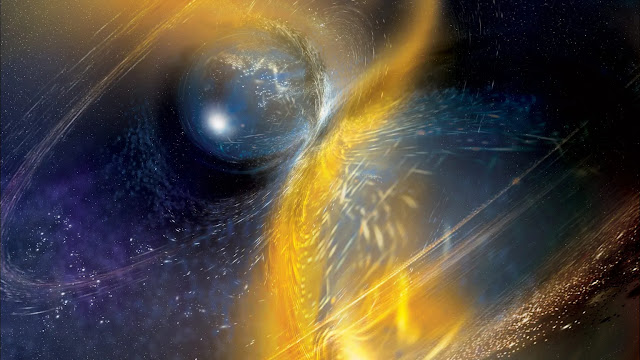In the realm of astrophysics, the speed of light and gravitational waves has long been considered equal, a notion rooted in the principles of relativity.
However, an intriguing discrepancy has emerged that challenges this fundamental assumption. When the first neutron star-neutron star merger was observed in both gravitational waves and light, the gravitational waves reached Earth almost two seconds before the light did. This occurred despite the signals originating from 130 million light-years away and supposedly traveling at the same speed.
The event in question took place on August 17, 2017, in the distant galaxy NGC 4993. Two neutron stars had been spiraling towards each other, emitting gravitational waves as they accelerated through curved space.
When they finally collided, a spectacular burst of gamma rays followed 1.7 seconds after the gravitational wave signal ceased. This time lag has puzzled scientists, as both signals should have arrived simultaneously if they were traveling at the same speed.Several theories have been proposed to explain this delay. One possibility is that the light was emitted only after material was ejected from the collision and collided with surrounding matter. Another theory suggests that the light was generated within the neutron stars and took time to reach the surface. A third explanation posits that the light had to pass through a matter-rich environment, slowing it down.
This phenomenon has significant implications for our understanding of the universe. It raises questions about the speed of gravity and light, and whether they are indeed equal. It also opens up new avenues for research into neutron star mergers, which are believed to be the cosmic factories for some of the heaviest elements in the universe, such as gold and platinum.
As scientists continue to gather more data on these cosmic events, they hope to refine their understanding of this puzzling discrepancy. For now, the mystery remains, serving as a humbling reminder of the complexities and uncertainties that still exist in our quest to understand the cosmos.


